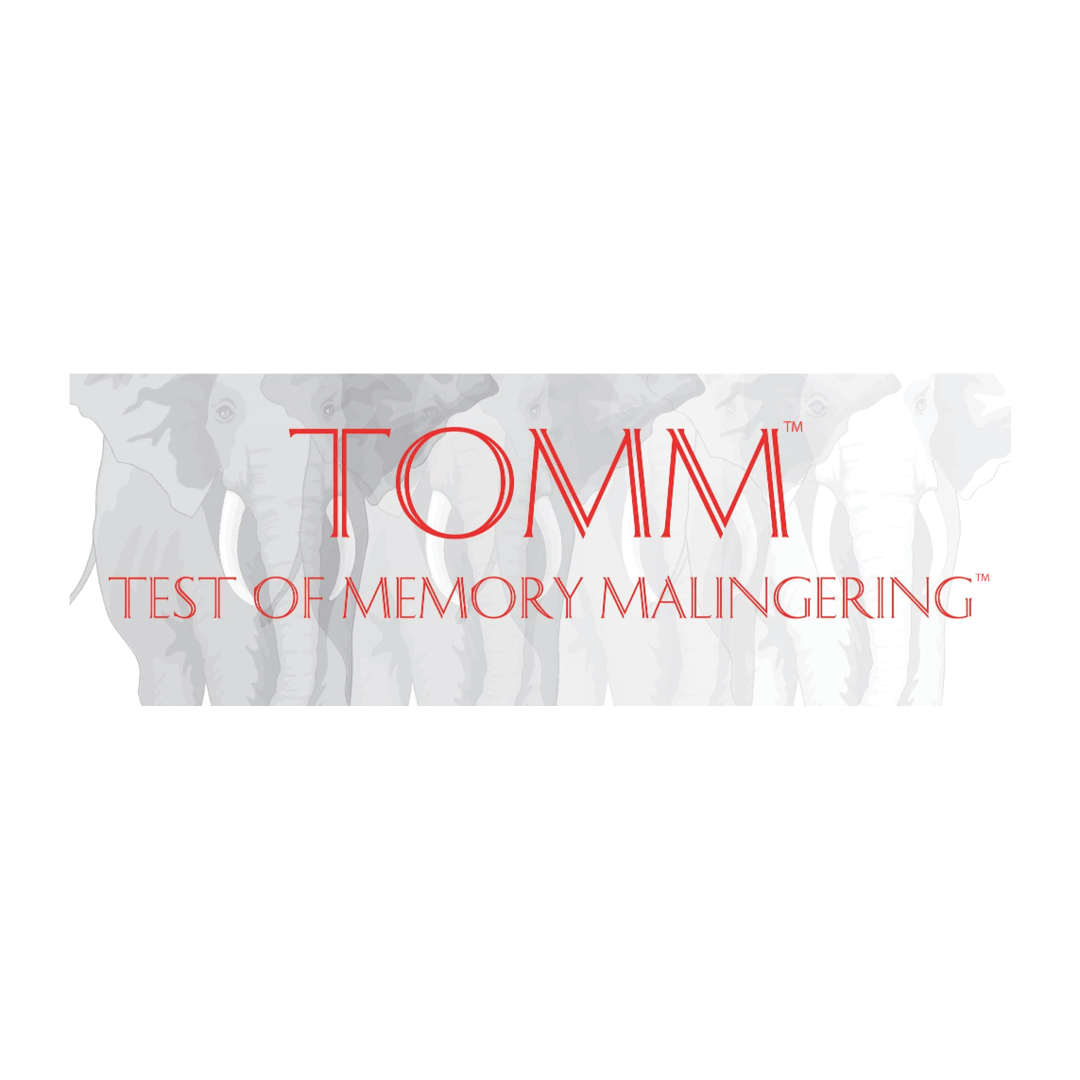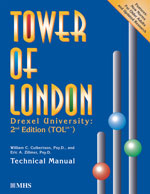
TOMM™
Test of Memory Malingering™
Filters
The Test of Memory Malingering™ (TOMM™) is a visual recognition test designed to help distinguish between malingered and true memory impairments. Research has found the TOMM to be sensitive to malingering and insensitive to a wide variety of neurological impairments, which makes it very reliable.
Age
- 17 to 73
Administration Type
- Self
- Professional
Administration Time
- 15 to 20 Minutes
Number of Items
- 50
Qualification Level
- C
Format(s)
- Handscored
- Software (Administration & Scoring)
- Malingering Memory Impairment
TOMM Research Monograph: Summary Application in Clinical and Research Settings
The TOMM Research Monograph includes recent research on the sensitivity of the TOMM, including research that addresses the use of the TOMM with specific populations, such as children and elderly adults, and those with psychotic disorders, psychiatric illnesses, Affective Disorders, Temporal Lobe Dysfunction, and Chronic Toxic Encephalopathy.
The TOMM is a 50-item recognition test that includes two learning trials and an optional retention trial.
During each learning trial, the respondent is shown 50 target pictures of common objects for three seconds each, at one second intervals. The subject is then shown 50 recognition panels, one at a time. Each panel contains one of the previously presented target pictures and a new picture. The respondent is asked to select the picture that appeared during the learning trial. The same procedure is used in the optional retention trial, except the target pictures are not re-administered. Results are based on two cutoff scores: 1) below chance and 2) criteria based on head-injured and cognitively impaired clients.
Validation studies conducted with clinical samples clearly demonstrate that individuals who score in the severely impaired range on standardized tests of learning and retention perform extremely well on the TOMM. This provides evidence that the TOMM is extraordinarily resistant to various types of severe cognitive impairment.
Support for the validity of the TOMM is also provided from studies with simulated and “at risk” malingerers. Results from the simulation study indicate that the TOMM discriminates between individuals who put forth good effort (high specificity) from those who deliberately fake responses (high sensitivity). Results from studies using “at risk” individuals (those with TBI and in litigation vs. those with TBI and not in litigation) demonstrate that the TOMM is sensitive to the performance of TBI patients at risk for malingering. Taken together, these results suggest that the TOMM is a useful psychometric test for detecting exaggerated or deliberately faked memory impairment.
Normative non-clinical data were collected in two phases. In the first phase, 405 cognitively intact individuals ranging in age from 16 to 84 years were administered a preliminary version of the TOMM. Based on their responses, revisions were made to the TOMM. In the second phase, the current two-choice version of the TOMM was administered to an additional sample of 70 cognitively intact participants ranging in age from 17 to 73 years, 63% of which were male.
In the clinical sample, data were obtained from 158 inpatients and outpatients, including 13 patients with no cognitive impairment, 42 with a cognitive impairment, 21 with Aphasia, 45 Traumatic Brain Injury patients, and 47 Dementia patients.
